Squarespace vs Weebly: Final verdict
Squarespace and Weebly both offer robust website building solutions, but they cater to different user needs and preferences.
-
Squarespace (Overall Grade: 7.9/10)
is ideal for users who prioritize design and aesthetics. It offers a wide variety of templates and advanced design functionalities, making it a great choice for creating visually appealing websites. Squarespace also excels in marketing features, customer support, and security, providing a comprehensive platform for professional website creation. When comparing Squarespace vs Weebly, Squarespace stands out for its user-friendly interface and extensive learning resources, making it slightly more accessible for users. -
Weebly (Overall Grade: 7.3/10)
is a user-friendly platform with a drag-and-drop interface, making it accessible for both beginners and experienced users. It offers a variety of themes, ecommerce features, and SEO tools, making it a solid choice for small businesses and personal websites. Considering Squarespace vs Weebly, Weebly provides a more extensive range of plugins and integrations, and its product testing options are more flexible, allowing users to explore all features before committing.

|

|
|
|---|---|---|
|
Design functionalities & templates |
8.0 |
7.4 |
|
Ease of use |
8.3 |
8.1 |
|
Ecommerce |
8.2 |
7.1 |
|
Website Editors |
8.3 |
7.6 |
|
Product testing options |
7.4 |
8.3 |
|
Price |
8.4 |
8.4 |
|
Hosting quality |
7.6 |
7.7 |
|
Website speed optimization |
6.7 |
7.9 |
|
Plugins and integrations |
6.8 |
7.5 |
|
Marketing features |
8.1 |
7.1 |
|
Customer support |
7.8 |
7.3 |
|
Security |
8.8 |
8.3 |
|
AI capabilities |
7.5 |
1.8 |
|
User Management |
7.4 |
6.5 |
Which one is the best for ecommerce: Squarespace or Weebly?
 8.2
8.2
 7.1
7.1
Verdict
: Squarespace vs Weebly presents a clear choice based on your ecommerce needs. Squarespace excels in providing a visually appealing and feature-rich platform, while Weebly offers simplicity and ease of use for smaller stores.
-
Squarespace
: Squarespace is ideal for businesses that prioritize design and aesthetics. It offers a range of ecommerce features, including secure payment processing, built-in marketing tools, and SEO optimization. Squarespace’s templates are diverse and cater to various industries, making it a strong choice for those looking to create a professional and visually appealing online store. However, when comparing Squarespace vs Weebly, Squarespace may require a steeper learning curve due to its advanced features. -
Weebly
: Weebly is perfect for users who need a straightforward and user-friendly ecommerce solution. It offers unlimited product listings, secure checkout, and customizable shipping options. Weebly’s drag-and-drop interface makes it accessible for beginners, and its integration with popular payment processors ensures smooth transactions. However, it may lack the design flexibility and advanced marketing tools that Squarespace provides, making it more suitable for smaller-scale operations.
Which one is the best for informational and business websites?
 8.4
8.4
 7.9
7.9
Verdict
: Squarespace is the superior choice for informational and business websites, thanks to its advanced design functionalities and user-friendly interface. Weebly, while also a strong contender, falls slightly behind in terms of design flexibility and overall user experience.
-
Squarespace
: Squarespace excels in creating visually stunning and professional websites. With a score of 8.4, it offers a wide variety of templates and advanced design functionalities, making it ideal for users who prioritize aesthetics. Its user-friendly interface and comprehensive learning resources further enhance its appeal for those looking to create a polished online presence. -
Weebly
: Weebly, scoring 7.9, is known for its ease of use and drag-and-drop interface, making it accessible for beginners. While it offers a robust set of features, including mobile-friendly design and SEO tools, it doesn’t quite match Squarespace in terms of design flexibility and advanced functionalities. However, Weebly’s extensive range of plugins and integrations makes it a versatile option for various business needs.
Squarespace vs Weebly: Detailed comparison
Design functionalities & templates
Design FunctionalitiesRepresents how well each platform allows for creative design and customization of websites.Score Components:
- Template Variety (30%): Range and quality of design templates.
- Customization (30%): Flexibility and options for design alterations.
- User Interface (20%): Ease and intuitiveness of the design process.
- Responsiveness (10%): Adaptability to different devices and screen sizes.
- Innovation (10%): Unique design features and tools.
 8.0
8.0
 7.4
7.4
🏆
Winner: Squarespace.
Squarespace offers a wider variety of templates and more advanced design functionalities, making it the better choice for users who prioritize design and aesthetics.
Squarespace boasts an impressive variety of website templates, offering over 120 pre-designed options to choose from. These templates cater to a wide range of needs and industries, from creative portfolios and sleek online stores to professional business websites and personal blogs.


On the other hand, Weebly offers a curated selection of templates, numbering in the low hundreds, which is fewer than Squarespace. However, the emphasis is on high-quality, professionally designed templates covering various categories such as business, ecommerce, portfolio, blog, personal, and events.
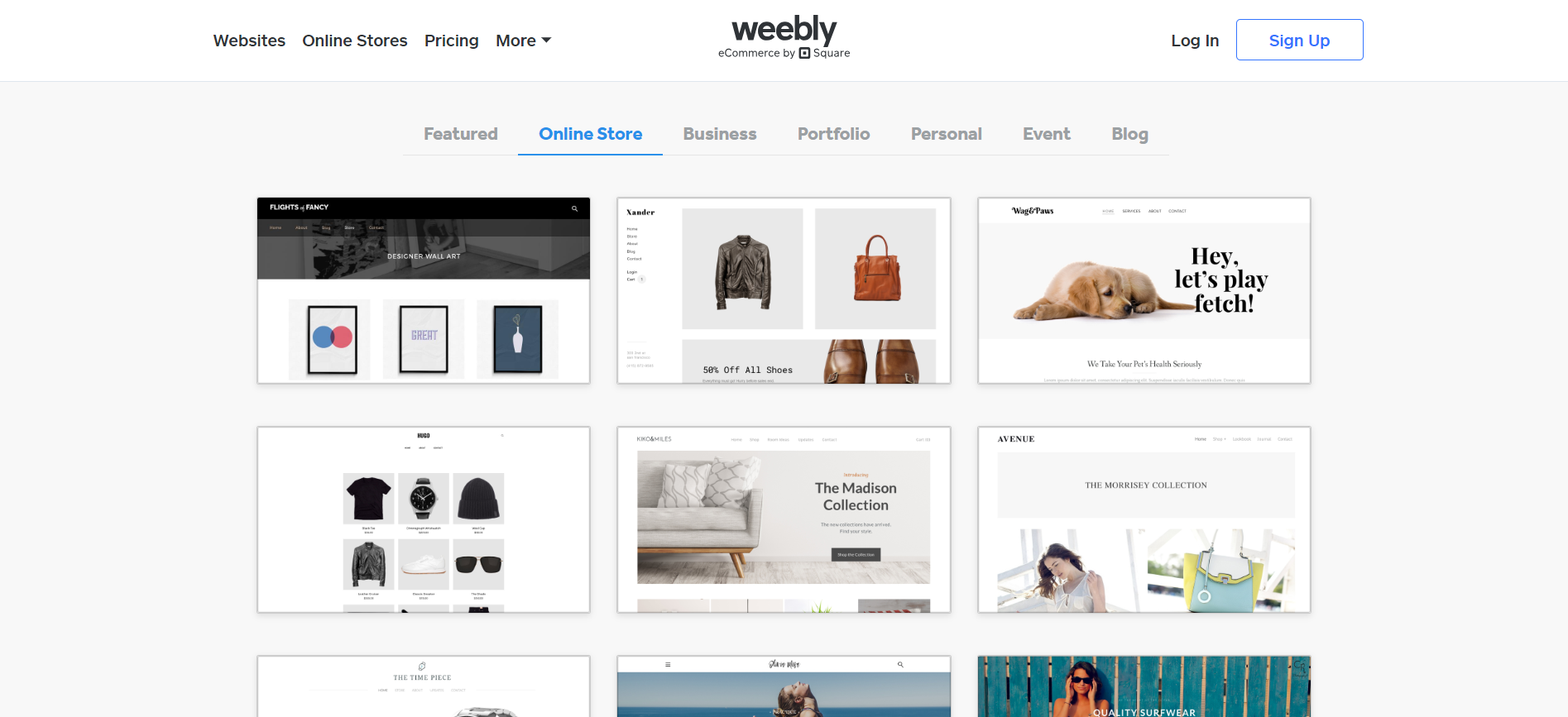

Get a head start on website creation with AI
Create a custom website tailored to your business needs 10X faster with 10Web AI Website Builder!
Ease of use
Ease of useReflects the platform’s overall user-friendliness.Score
Components:
- Learning curve (40%): Quickness and ease of getting started.
- Interface design (30%): Simplicity and intuitiveness of layout.
- User guidance (20%): Quality of tutorials and support.
- Flexibility (10%): Adaptability to various user skills.
 8.3
8.3
 8.1
8.1
🏆 Winner: Squarespace
. With a score of 8.3, Squarespace edges out Weebly, which scored 8.1. Squarespace’s user-friendly interface, straightforward navigation, and real-time preview make it a slightly more accessible platform for users.
Learning Resources
🏆 Winner: Squarespace
. Both platforms offer a variety of learning resources, but Squarespace’s comprehensive Help Center, clear video tutorials, live webinars, informative blog, and active community forum provide a more varied and accessible learning experience.
For ecommerce
EcommerceMeasures the platform’s effectiveness in supporting online business activities.Score Components:
- Ecommerce themes and templates (20%): Variety and design of templates.
- Product management (25%): Ease of managing and organizing products.
- Payment options (25%): Variety and convenience of payment methods.
- Ecommerce features (20%): Features for managing an ecommerce store.
- Integration (10%): Compatibility with external e-commerce tools and services.
 8.2
8.2
 7.1
7.1
Squarespace and Weebly both offer user-friendly ecommerce solutions, but they cater to different needs. Squarespace is more suited for businesses that require a visually appealing and responsive online store with built-in marketing tools, SEO optimization, and detailed analytics. Weebly, on the other hand, is more suitable for users who need a simple ecommerce solution with features like unlimited product listings, secure checkout, and customizable shipping options.

|

|
|
|---|---|---|
|
Ecommerce themes and templates |
7.5 |
6.5 |
|
Product page customization |
7.0 |
6.8 |
|
Payment processing and commissions |
7.8 |
7.0 |
|
POS capabilities |
6.5 |
6.0 |
|
Payment gateways |
7.5 |
7.5 |
|
Product numbers |
6.8 |
7.0 |
|
Additional ecommerce features |
7.2 |
6.7 |
Squarespace ecommerce features:
- Intuitive interface
- Secure payment processing
- Built-in marketing tools
- SEO optimization
- Website analytics
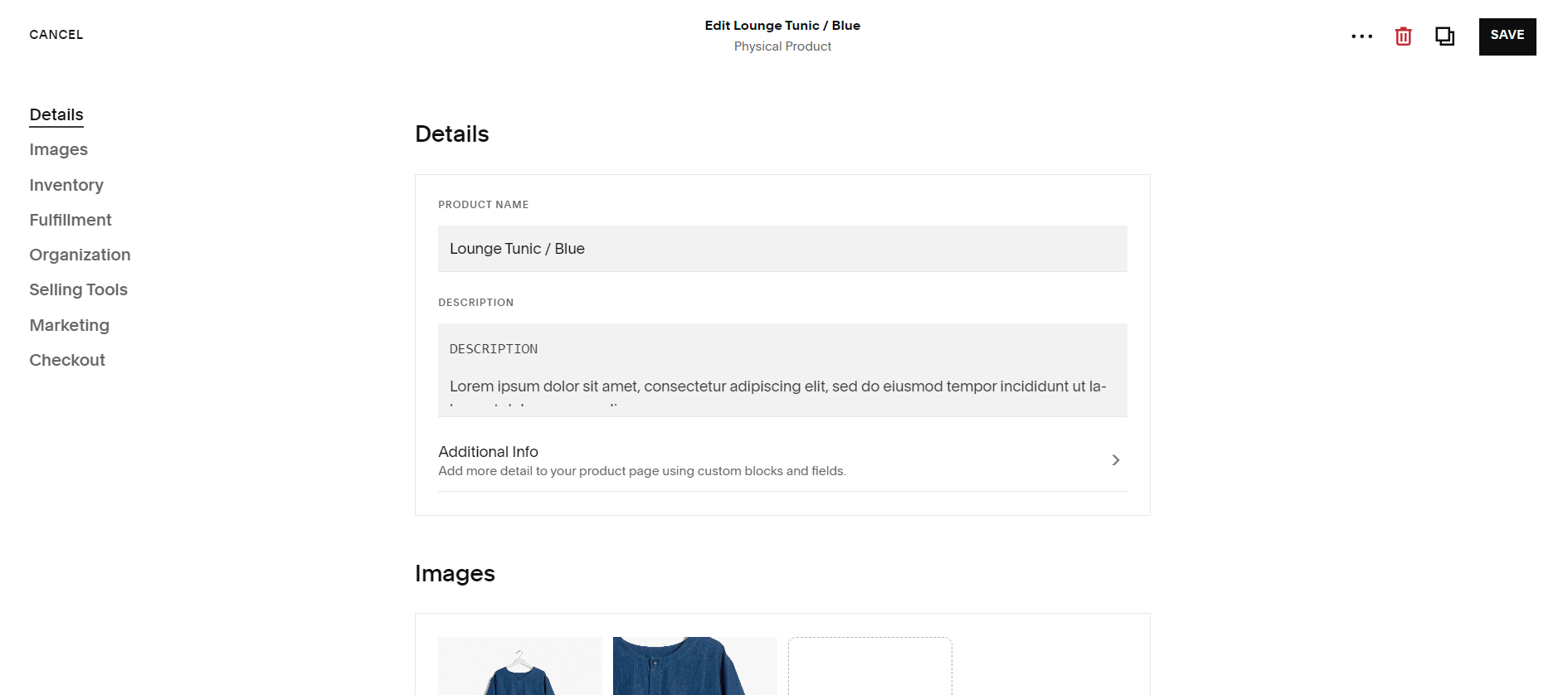
Weebly ecommerce features:
- Unlimited products
- Inventory management
- Product reviews and ratings (Paid plans)
- Secure checkout
- Shipping options
- Abandoned cart recovery (Paid plans)
- Basic analytics
- SEO tools
- Marketing integrations (Paid plans)
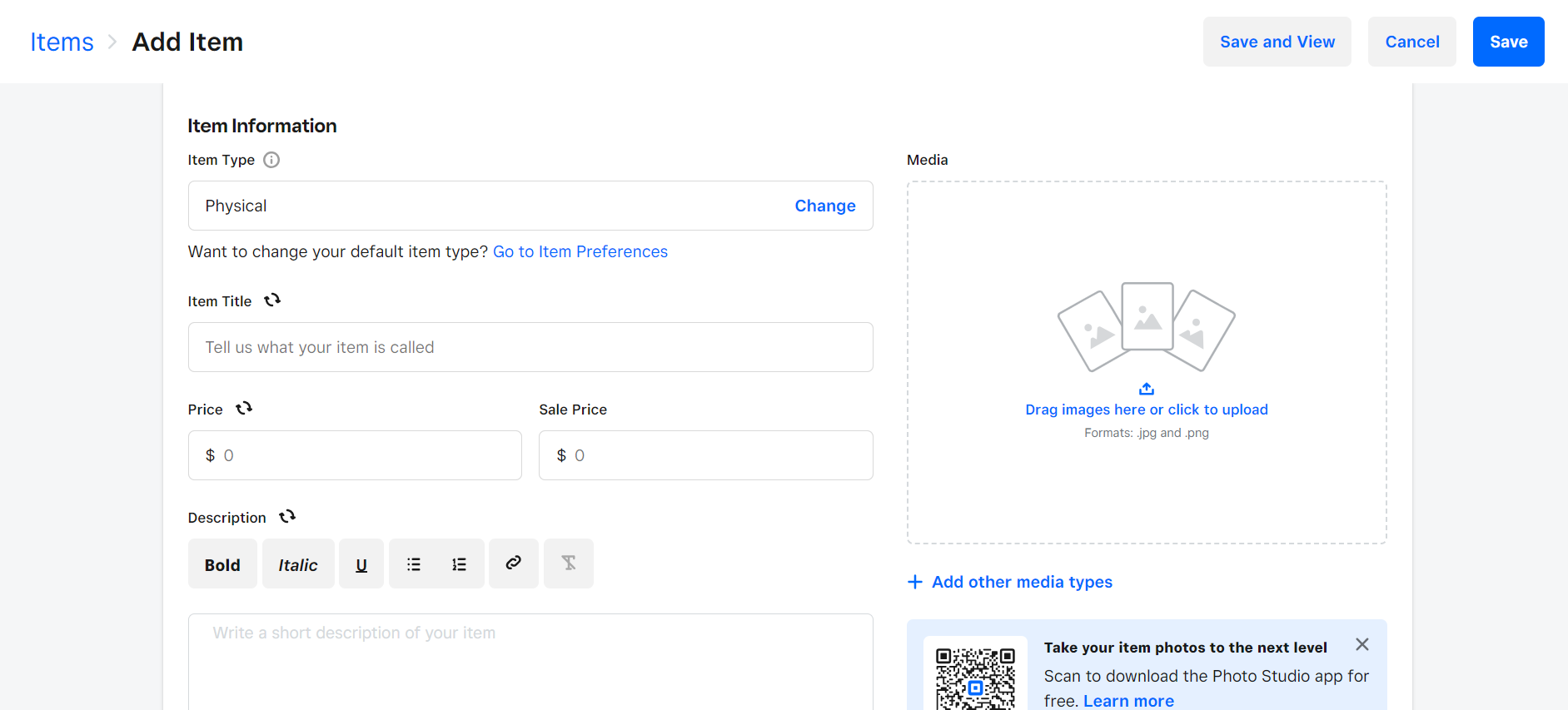
Ecommerce themes & templates
Squarespace provides a diverse selection of around 50 ecommerce templates, catering to various industries like fashion, beauty, home goods, and technology. These templates range from clean and minimalist to bold and colorful, accommodating different brand aesthetics and product types. Weebly, on the other hand, provides ecommerce-specific themes with a decent range of styles, offering built-in features like product galleries and optimized checkout flows. However, Weebly has a smaller theme selection and less design flexibility compared to Squarespace.
Product page customization
Squarespace offers options for layout, design, and interactive elements on product pages. It also provides advanced options like custom code injection and third-party app integrations. However, free templates have fewer customization options than premium ones. Weebly allows a decent level of product page customization through its user-friendly interface, but it has limitations in design flexibility compared to Squarespace.
Payment processing
Squarespace provides flexible payment processing for online stores with integrated gateways like Stripe and PayPal. It also supports payment links, subscriptions, and the ability to accept international payments in various currencies. Weebly seamlessly integrates with popular payment processors such as Square, Stripe, PayPal, and others, enabling secure and convenient online transactions for your store. Users can choose their preferred gateway and set up payment processing within Weebly’s settings.
Website Editors
Website EditorsEvaluates the platforms’ website building and editing capabilities.Score Components:
- Customization tools (40%): Range and power of editing features.
- Editor usability (30%): User experience within the editor.
- Design flexibility (20%): Freedom in layout and design changes.
- Update and maintenance ease (10%): Simplicity of updating and maintaining the site.
 8.3
8.3
 7.6
7.6
🏆
Winner: Squarespace
. Squarespace, with a score of 8.3, offers a user-friendly editor that allows easy drag-and-drop website creation without coding. With visually appealing templates and customization options, it caters to beginners and pros alike. The real-time editing experience ensures instant previews. Prioritizing content, it’s mobile-responsive and offers functional features like forms, social media integration, and online stores. Squarespace seamlessly integrates with tools for extended capabilities.
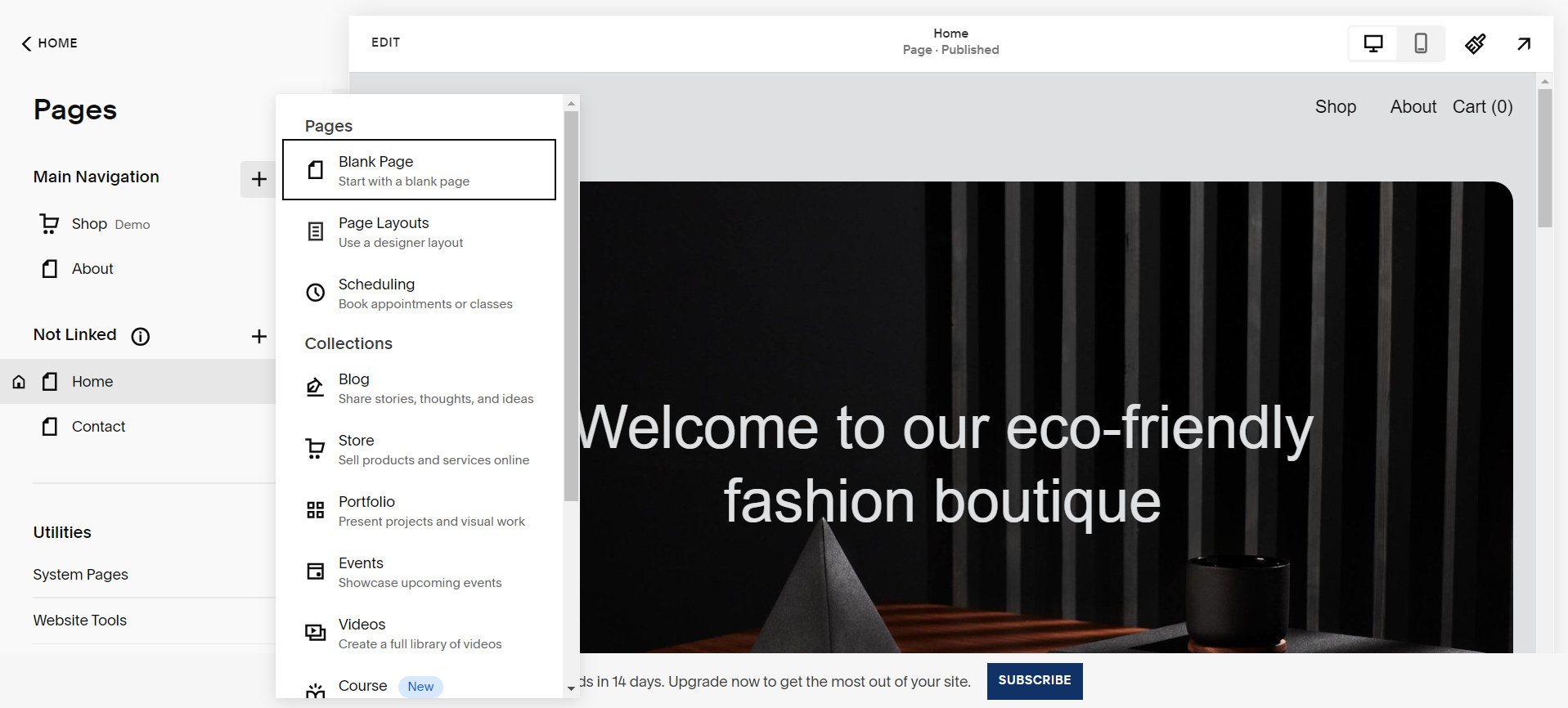
Weebly’s editor, scoring 7.6, stands out for its drag-and-drop simplicity, catering to beginners with an intuitive interface and visual editing. The editor features a range of pre-designed templates, customization options, and content management tools, making it accessible for users without coding knowledge. While offering ease of use, it has some limitations in design flexibility and advanced features, with certain functionalities requiring a move to paid plans.
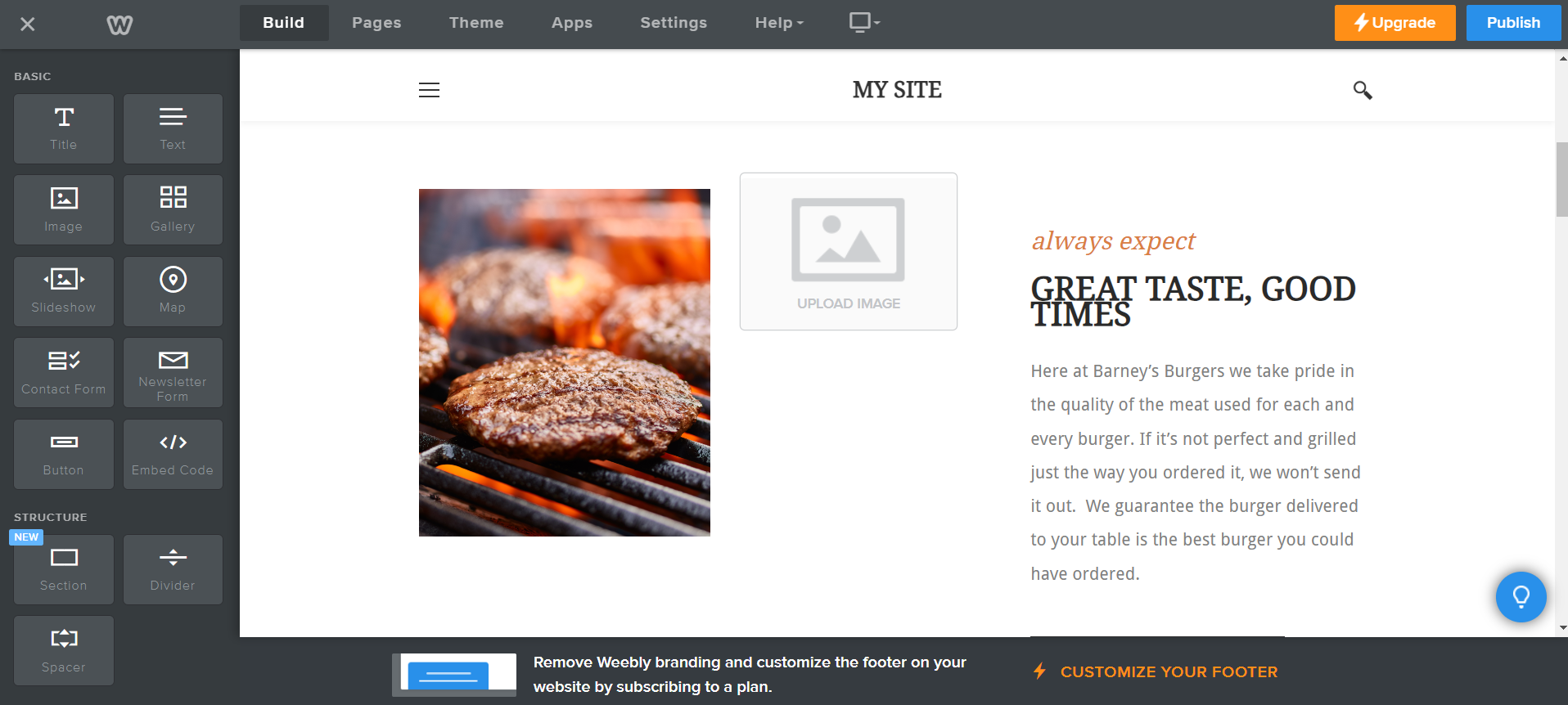
Mobile editor/app
 8.5
8.5
 8.1
8.1
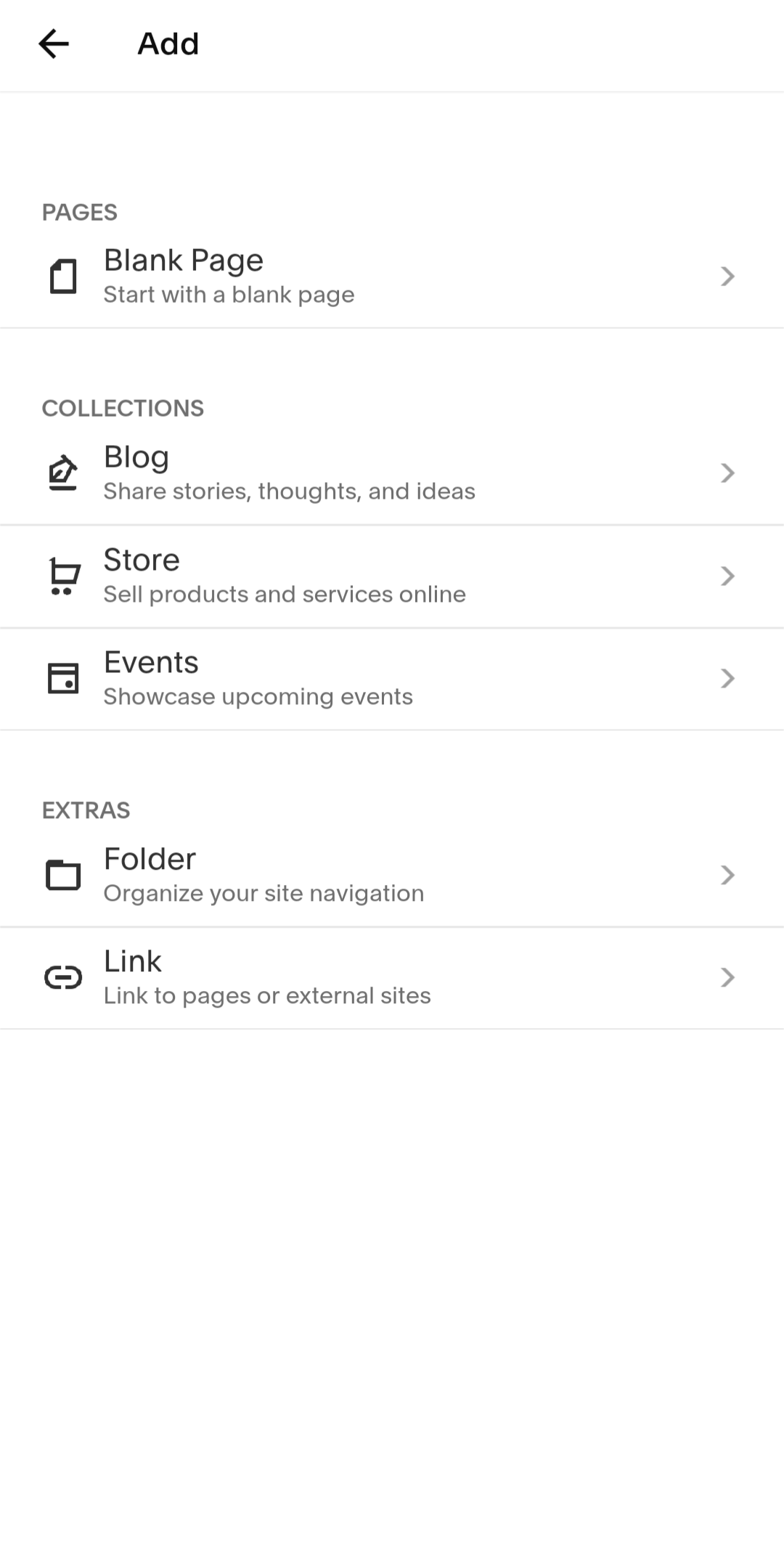
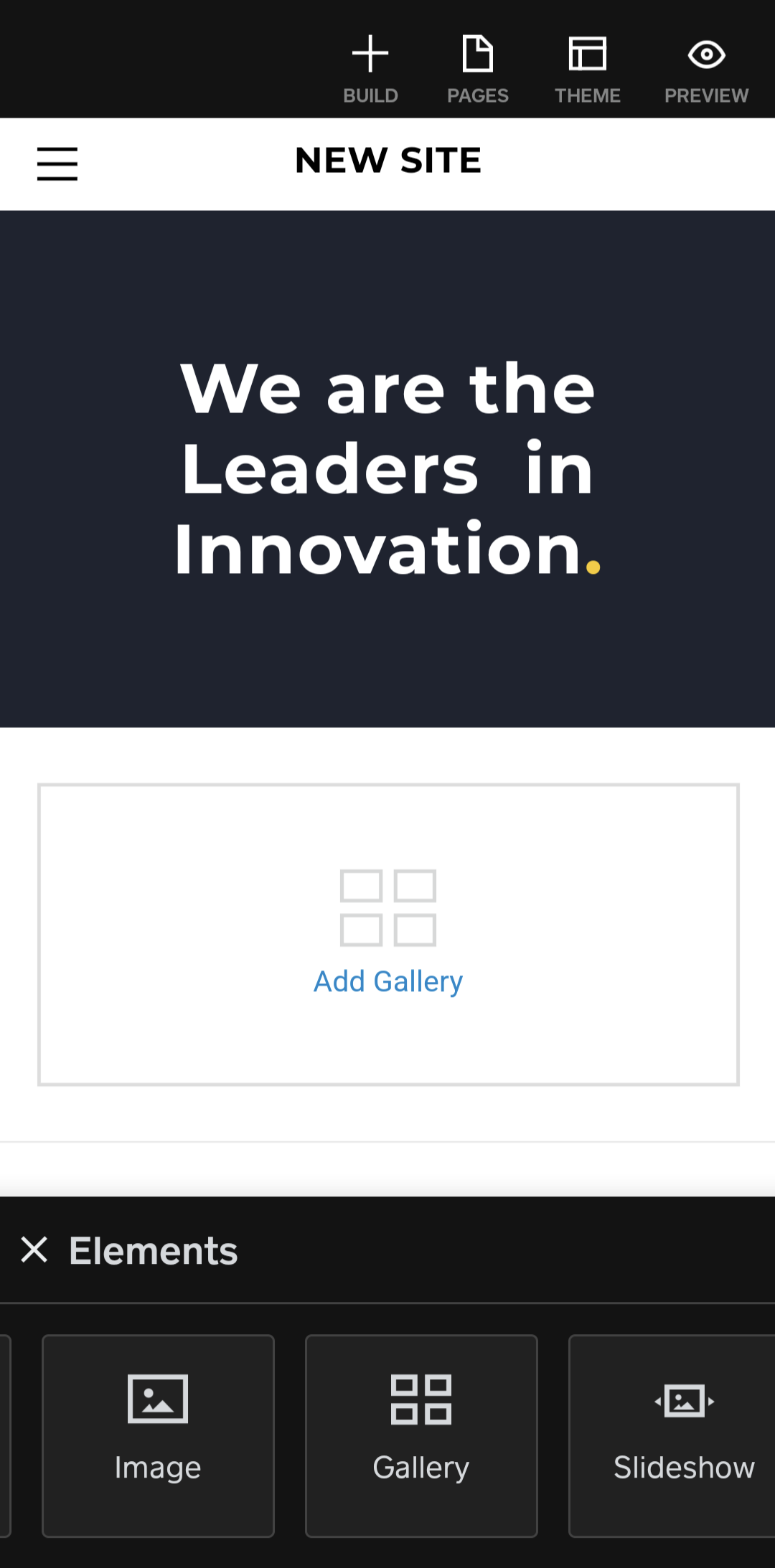
🏆
Winner: Squarespace
. Both Squarespace and Weebly offer mobile apps that allow users to manage and make basic edits to their websites on the go. However, both apps have limitations when it comes to advanced editing capabilities or extensive design flexibility.
The Squarespace app provides essential features like content editing, website analytics, online store management, and social media scheduling. However, complex tasks such as advanced design customization or creating new page layouts require access to the desktop editor, as the app doesn’t offer the full range of functionalities available on desktop.
On the other hand, Weebly’s mobile app is best suited for quick content updates rather than major design changes. While it offers features like content management and basic design customization, it lacks advanced editing capabilities or extensive design flexibility.
In summary, Squarespace has a slightly higher mobile editor score than Weebly, making it the winner in this category. However, both platforms could improve their mobile editing capabilities to provide a more comprehensive and flexible editing experience on the go.
Product testing options
Product Testing OptionsAssesses the options for trying out platform features before commitment.Score Components:
- Trial quality (40%): Extent and usefulness of the trial or free version.
- Feature accessibility (30%): How many features are available to test.
- Trial duration (20%): Length of the trial period.
- Ease of transition (10%): Smoothness of moving from trial to paid plans.
 7.4
7.4
 8.3
8.3
Overall Result
:
Weebly Wins
. Weebly scores 8.3 in product testing options, slightly higher than Squarespace’s 7.4. Weebly offers a free version and a 30-day money-back guarantee, allowing users to explore all the features of any paid plan and get a full refund if not satisfied. Squarespace, on the other hand, offers a 14-day free trial and a full refund within 14 days for annual subscriptions. However, it does not allow testing of all premium features.

|

|
|
|---|---|---|
|
Free Plan |
No |
Yes |
|
Trial Duration |
14 days |
No (30-day money-back guarantee) |
|
Testing Premium Features |
Limited |
Full access with refund option |
Price
PriceLooks at the cost-effectiveness and value for money of each platform.Score Components:
- Plan value (40%): What each pricing tier offers.
- Transparency and clarity (30%): Clearness of pricing structures.
- Flexibility of plans (20%): Range of options to suit different budgets.
- Hidden costs (10%): Additional expenses not included in the plan.
 8.4
8.4
 8.4
8.4
Squarespace and Weebly have similar pricing structures, but Squarespace offers larger discounts on annual plans and has an enterprise plan for larger businesses.

|

|
|
|---|---|---|
|
Free |
No offering at this amount. |
Free ($0/month): Basic template selection, 500MB storage, Weebly ads, limited features |
|
$0-$10 |
No offering at this amount. |
Personal ($6/month): Custom domain, unlimited storage, ad-free, limited SEO and email marketing tools Value for price: 6.0 |
|
$10-$15 |
Personal ($12/month): Build a basic website with limited features for personal use. Access to basic templates, mobile-friendly design, and some social media integrations. Value for price: 5.0 |
Professional ($12/month): Advanced design options, blog membership features, advanced SEO tools, form analytics Value for price: 7.5 |
|
$15-$20 |
Business ($16/month): Upgrade features with custom domain, SEO tools, marketing tools like email campaigns, and analytics. Value for price: 6.5 |
No offering at this amount. |
|
$20-$30 |
Commerce ($26/month): Perfect for online stores with built-in eCommerce functionality (unlimited products), secure checkout, inventory management, and marketing tools. Value for price: 8.0 |
Performance ($26/month): Advanced ecommerce features, lead capture tools, custom code injection, marketing automation Value for price: 9.0 |
|
$40+ |
Advanced Commerce ($40/month): Cater to high-volume stores with advanced eCommerce features like abandoned cart recovery, product subscriptions, gift cards, and real-time shipping quotes. Value for price: 9.0 |
No offering at this amount. |
location. As a result in rare cases the prices displayed here can differ from the ones you see on their
websites.
Hosting quality
Hosting
qualityExamines the reliability and performance of the hosting solutions.Score Components:
- Uptime (40%): Consistency and reliability of website availability.
- Speed (30%): Loading times and performance.
- Bandwidth and storage (20%): Sufficiency of resources provided.
- Data centers (10%): Quality and distribution of hosting infrastructure.
 7.6
7.6
 7.7
7.7
🏆
Winner: Weebly
Both Squarespace and Weebly offer reliable hosting services with a 99.9% uptime guarantee. However, Weebly edges out with a slightly higher hosting quality score and a more diverse hosting infrastructure, including shared, cloud-based, and managed hosting. Squarespace, on the other hand, offers proprietary cloud-based hosting and has data centers across North America, Europe, and Asia.

|

|
|
|---|---|---|
|
Do they offer hosting? |
Yes, included in all of their plans |
Yes, included in all of their plans |
|
Data Centers: |
Squarespace’s data centers are strategically scattered across North America, Europe, and Asia |
Weebly leverages a global network of data centers to deliver reliable and efficient website hosting. However, they do not publicly disclose, the specific locations of their data centers due to security and technical reasons. |
|
Type of hosting: |
Proprietary cloud-based hosting |
Shared Hosting, Cloud Based Hosting, Managed Hosting |
|
Uptime: |
99.9% |
99.9% |
|
Uptime Guarantee: |
Yes |
Yes, 99.95% |
Website Speed Optimization
Website Speed OptimizationEvaluates optimization of website loading timesScore Components:
- PageSpeed Score (30%): Google’s score indicating performance optimization.
- Loading Time (30%): The average time until a website is fully interactive.
- Mobile Optimization (15%): Optimization effectiveness for mobile devices.
- Resource Optimization (15%): Optimizing images, scripts, and other heavy resources.
- CDN Usage (10%): Use of CDN to enhance speed across geolocations.
 6.7
6.7
 7.9
7.9
🏆 Winner: Weebly
Both Squarespace and Weebly prioritize website performance and page speed, but Weebly has a slight edge due to its load balancing, CDN, and significant enhancements in Core Web Vitals performance.

|

|
|
|---|---|---|
|
Focus |
Responsive design, image optimization |
Load balancing, CDN |
|
Performance Tools |
Google Lighthouse, PageSpeed Insights |
Google PageSpeed Insights Integration |
|
Key Strategies |
Responsive design, image optimization, CDN, code minification, lazy loading of images |
Load balancing, CDN |
|
Load Times |
0.7s to 9.1 s (Average: 2.9s) |
2s to 4s |
|
Page Speed Scores Range |
20/100 to 93/100 (Average: 62.7/100) |
Average 80+/100 |
|
Core Web Vitals Improvement |
Emphasis on LCP, FID, CLS improvements |
Significant enhancements in CWV performance |
Weebly has significantly enhanced its Core Web Vitals performance by implementing measures such as automatic image optimization, lazy loading for content, code minification, and caching. These improvements, along with streamlined JavaScript usage and an enhanced server infrastructure, aim to boost website loading speed and responsiveness. Weebly’s load times range from 2s to 4s, with an average PageSpeed score of 80+/100.
Squarespace, on the other hand, focuses on responsive design, image optimization, CDN, code minification, and lazy loading of images. Its load times range from 0.7s to 9.1s, with an average of 2.9s. The PageSpeed scores range from 20/100 to 93/100, with an average of 62.7/100. Squarespace also emphasizes improvements in LCP, FID, and CLS for Core Web Vitals.
Get a head start on website creation with AI
Create a custom website tailored to your business needs 10X faster with 10Web AI Website Builder!
Plugins and integrations
Plugins and integrationsMeasures the range and effectiveness of additional plugins and integrations.Score Components:
- Variety of options (40%): Range of available add-ons.
- Integration smoothness (30%): Ease of integrating plugins into the site.
- Quality of plugins (20%): Functionality and reliability of the options.
- Custom integration capabilities (10%): Support for custom or third-party integrations.
 6.8
6.8
 7.5
7.5
🏆 Winner: Weebly.
Weebly, with a score of 7.5, offers a more extensive range of plugins and integrations compared to Squarespace, which scores 6.8. Weebly’s App Center and the ability to inject custom code for specific features provide users with a wide range of functionalities to enhance their websites. Squarespace, on the other hand, lacks an official app store but supports integrations and extensions through custom code injection and third-party tools. Both platforms offer a variety of integrations, but Weebly’s broader range gives it the edge.
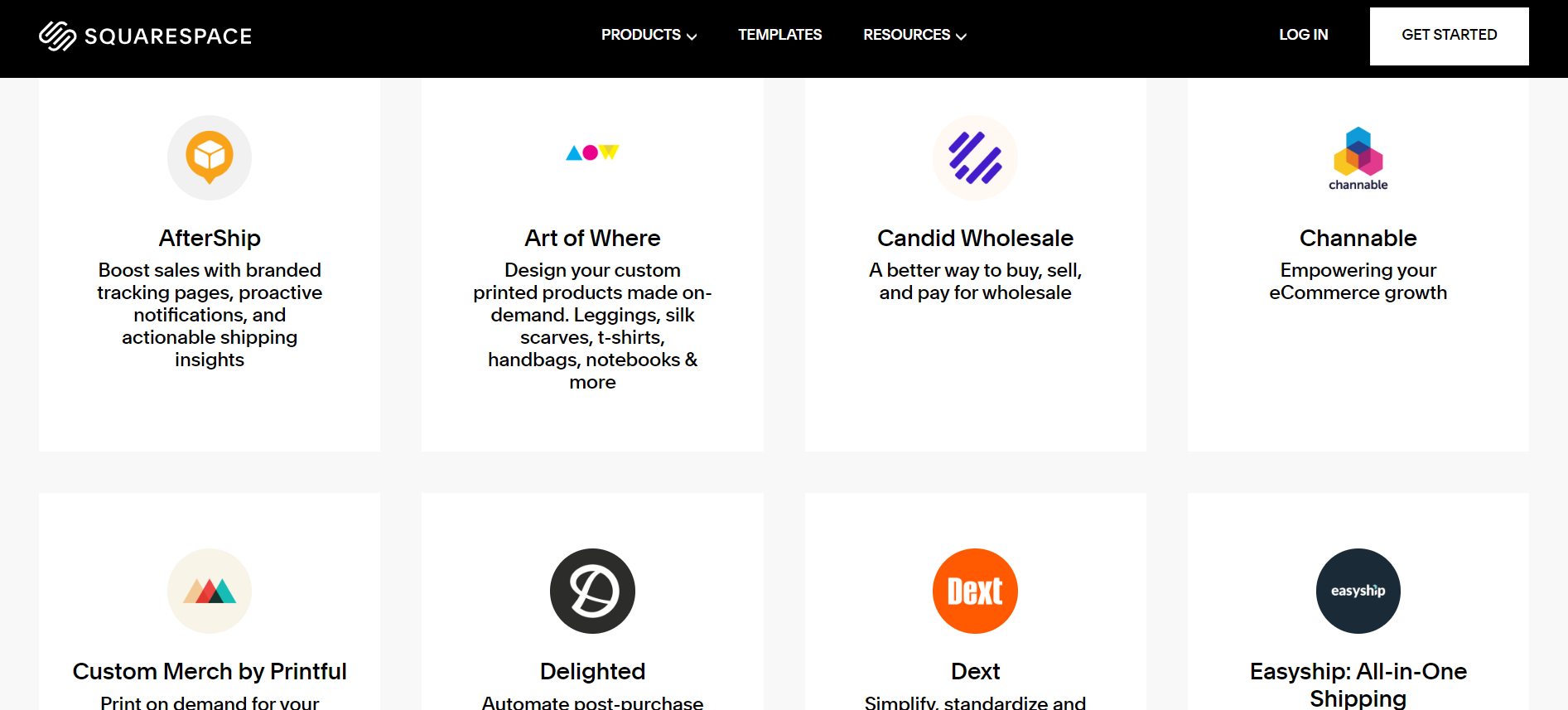
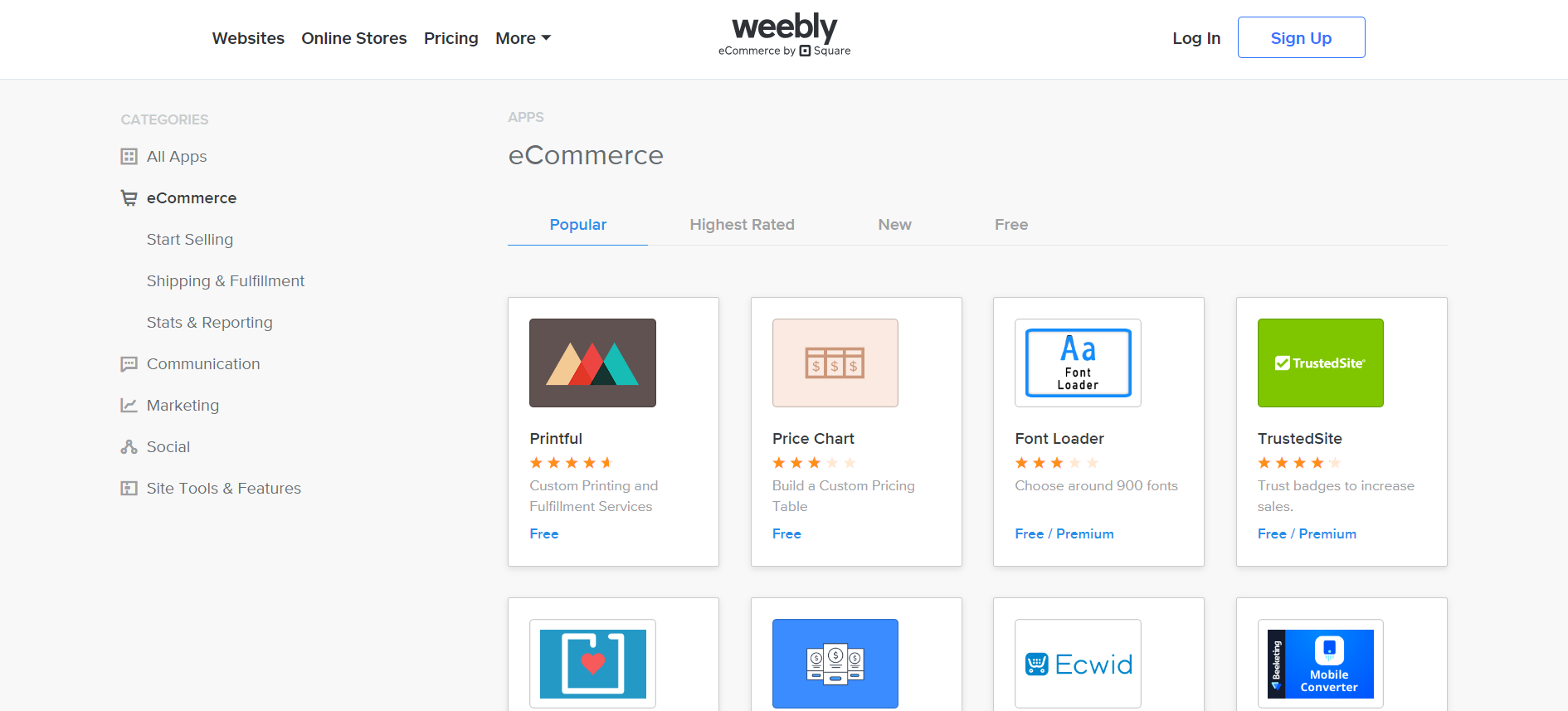
Marketing Features
Design FunctionalitiesRepresents how well each platform allows for creative design and customization of websites.Score Components:
- Template Variety (30%): Range and quality of design templates.
- Customization (30%): Flexibility and options for design alterations.
- User Interface (20%): Ease and intuitiveness of the design process.
- Responsiveness (10%): Adaptability to different devices and screen sizes.
- Innovation (10%): Unique design features and tools.
 8.1
8.1
 7.1
7.1
🏆
Overall Winner: Squarespace
. Squarespace stands out for its more advanced marketing tools, especially in analytics and ad campaign management. Weebly is strong in SEO and blogging, ideal for content-driven strategies.

|

|
|
|---|---|---|
|
SEO Tools |
|
|
|
Email Marketing |
|
|
|
Blogging |
|
|
|
Social Media Integration |
Direct linking and selling on social platforms, plus feed displays on-site |
Easy link to social media accounts and share buttons |
|
Analytics and Reporting |
Detailed insights into website performance and visitor behavior |
Built-in analytics for tracking site performance |
|
Ads and Promotions |
Integration with Google Ads and tools for managing sophisticated ad campaigns |
Integrated marketing tools for creating and managing ads |
Customer Support
Customer supportEvaluates the quality and availability of support options.Score Components:
- Response time (40%): Speed of support responses.
- Support quality (30%): Effectiveness and helpfulness of the support.
- Availability (20%): Range of support channels (phone, chat, email).
- Resource richness (10%): Quality of self-help and educational materials.
 7.8
7.8
 7.3
7.3
🏆 Winner: Squarespace
. In the comparison of Squarespace vs Weebly, Squarespace takes the lead with its comprehensive support options. Squarespace offers live chat, email, and phone support, with email support available 24/7. The community forum and help center provide round-the-clock assistance, and support is available in multiple languages. For enterprise users, Squarespace provides a dedicated account manager and priority support, ensuring businesses receive the help they need promptly.
Weebly, on the other hand, offers a robust support system with an extensive online help center, community forum, and email support. Live chat and phone support are available but limited to specific hours and plans. While Weebly’s support is commendable, it doesn’t match the 24/7 availability and enterprise-level support offered by Squarespace.
Security
SecurityLooks at the platforms’ security measures and data protection.Score Components:
- Data protection (40%): Safeguards for user and customer data.
- SSL and encryption (30%): Implementation of secure connections.
- Compliance (20%): Adherence to industry security standards.
- Regular updates (10%): Frequency of security updates and patches.
 8.8
8.8
 8.3
8.3
🏆
Winner: Squarespace
. Squarespace takes a comprehensive approach to security, with measures such as secure server storage, encryption, strict access controls, compliance with regulations, transparent privacy policies, vulnerability scanning, and malware detection. These measures collectively safeguard your website content and customer information.
Weebly also prioritizes the privacy and security of user data through various measures such as secure data centers, encryption, access controls, and regular backups. However, Squarespace’s higher security score indicates a more robust security infrastructure.
AI Capabilities
AI capabilitiesMeasures the effectiveness of AI-driven features and tools.Score Components:
- Automation efficiency (40%): Impact of AI on streamlining processes.
- Personalization (30%): AI-driven customization for users or customers.
- AI-Assisted design (20%): Role of AI in website design and functionality.
- Data analysis (10%): Use of AI in interpreting user data and analytics.
 7.5
7.5
 1.8
1.8

|

|
|
|---|---|---|
|
AI Builder |
No dedicated AI builder, but AI-powered features available |
No dedicated AI builder |
|
AI Ecommerce features |
AI-powered copywriting, SEO optimization, product suggestions |
No built-in AI-powered ecommerce features |
|
AI Content Generation |
AI-generated product descriptions, website copy, blog posts |
|
|
Additional AI features |
SEO optimization, email marketing insights, inventory management |
Allows integration of third-party AI-powered plugins |
🏆 Winner: Squarespace
. With a score of 7.5, Squarespace offers a variety of AI-powered features that assist in website creation, ecommerce, and content generation. Although it doesn’t have a dedicated AI builder, the available AI capabilities significantly streamline the website building process and provide valuable assistance.
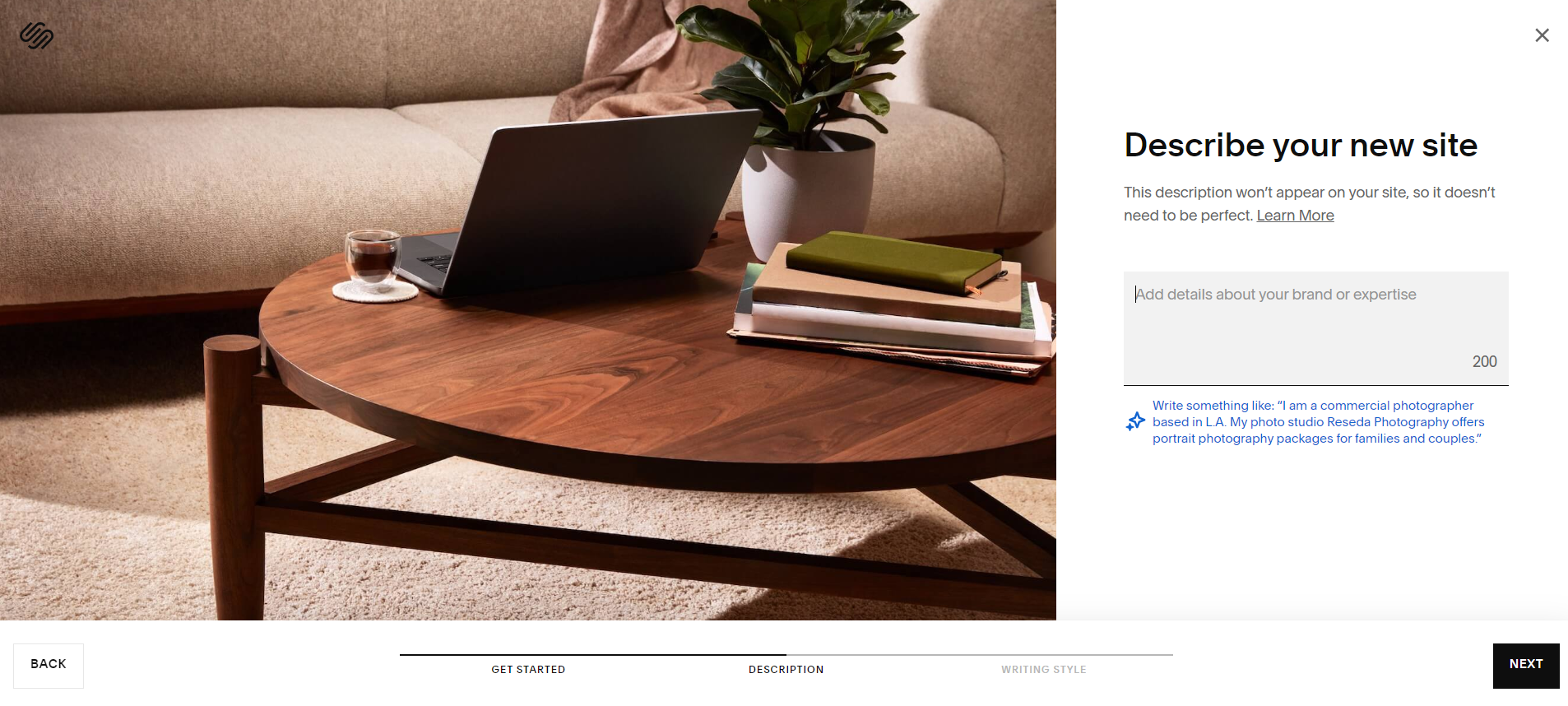
Weebly, with a score of 1.8, does not have a dedicated AI builder feature and lacks native AI content generation features. However, it allows the integration of third-party AI-powered plugins.
User Management
User ManagementAssesses the platforms’ capabilities in managing user roles, permissions, and accessibility.Score Components:
- Role Customization (40%): Flexibility in creating and defining user roles and
permissions. - Ease of Management (30%): User interface and tools for managing users.
- Access Control (20%): Effectiveness of access control measures for different user
levels. - Scalability (10%): Ability to manage a growing number of users efficiently.
 7.4
7.4
 6.5
6.5
🏆 Winner: Squarespace
. Both Squarespace and Weebly offer different user roles and access levels, but Squarespace has a higher user management score.
- Squarespace allows varying numbers of users with editing access depending on the plan. The Personal Plan allows one owner, Business and Commerce Plans permit 2 collaborators with different access levels, and the Enterprise Plan offers unlimited users, each with customizable access privileges.
- Weebly’s number of users permitted to edit a website varies depending on the plan selected. The Free Plan allows only one user, the Personal Plan accommodates two users, the Professional Plan permits up to 10 users, and the Business Plan offers unlimited user access.
Squarespace User Roles and Access Levels:
| Role | Description | Access Highlights |
|---|---|---|
| Owner | The primary user who created the website and has full access. | Full site access, including billing, site settings, content editing, and member management. |
| Administrator | Users granted nearly full access to manage the site alongside the Owner. | Access to most areas except for some owner-specific settings like ownership transfer. |
| Content Editor | Users focused on adding and managing site content without full site access. | Can add, edit, and delete content on pages, blog posts, and manage comments. |
| Billing | Users who manage the subscription and billing details. | Access to billing information and the ability to update subscription details. |
| Store Manager | Users who manage the ecommerce aspects of the site. | Can manage inventory, fulfill orders, manage customers, and view sales analytics. |
| Custom | A role defined by the site owner or administrators with specific access. | Customizable access as defined by the Owner or Administrators, can vary widely between sites. |
Weebly User Roles and Access Levels:
| Role | Description | Access Highlights |
|---|---|---|
| Owner | The primary account holder and creator of the Weebly site. | Full access to all site features, including design, pages, settings, store management, and analytics. |
| Admin | Users granted significant control over the site by the Owner. | Can edit and publish site content, manage store orders, view analytics, and access most site settings. |
| Author | Users with limited permissions, typically focused on content creation. | Can create and edit blog posts, manage comments, and sometimes edit specific pages if granted permission. |
| Store Manager | Specifically focused on e-commerce aspects of the site. | Access to manage and fulfill orders, view store analytics, and edit product details, but cannot change site design or settings. |
Additional Features

|

|
|
|---|---|---|
|
SSL Certificate |
|
|
|
Custom Domain |
|
|
|
Free Custom Domain Included |
|
|
|
International Domains |
|
|
|
Mobile Responsive |
|
|
|
Page Speed |
|
|
|
Website Builder Mobile App |
|
|
|
Convert a Website To An App |
|
|
|
Website Analytics |
|
|
|
Multilingual Sites |
|
|
|
Multiple Users |
|
|
Squarespace vs Weebly: User Feedback
Squarespace is well-liked for its easy-to-use interface and versatile tools, making it ideal for those who aren’t tech-savvy. It offers various features like website creation, SEO, online selling, and more, catering to different users. Customers appreciate its good customer support and visually appealing templates, creating a professional online presence. However, some users find issues with domain transfer/setup, limited customization options, and consider the pricing slightly higher. There are also occasional concerns about customer service and technical limitations like template rigidity and missing features.
Square Online (formerly Weebly) receives positive reviews for its user-friendly drag-and-drop interface and quick website development features, making it suitable for small businesses. Users highlight its role in efficient appointment booking, saving time in coordination and scheduling. However, some express a desire for more advanced building tools and better pricing. The platform is recognized for streamlining website and payment operations, though opinions on customer service and design limitations are mixed. Overall, it is considered a good, affordable solution for small businesses.
The making of this blog
We followed a clear, step-by-step process to write and research this article.
Squarespace vs Weebly: FAQ
Which platform is better for beginners, Squarespace or Weebly?
Can I use both Squarespace and Weebly for selling products online?
How do Squarespace and Weebly differ in terms of design and customization?
What are the major differences in pricing between Squarespace and Weebly?
Which platform offers better customer support, Squarespace or Weebly?
Are Squarespace and Weebly secure platforms for building a website?









